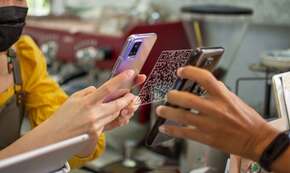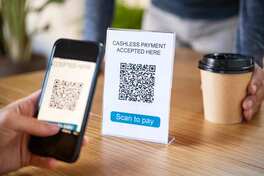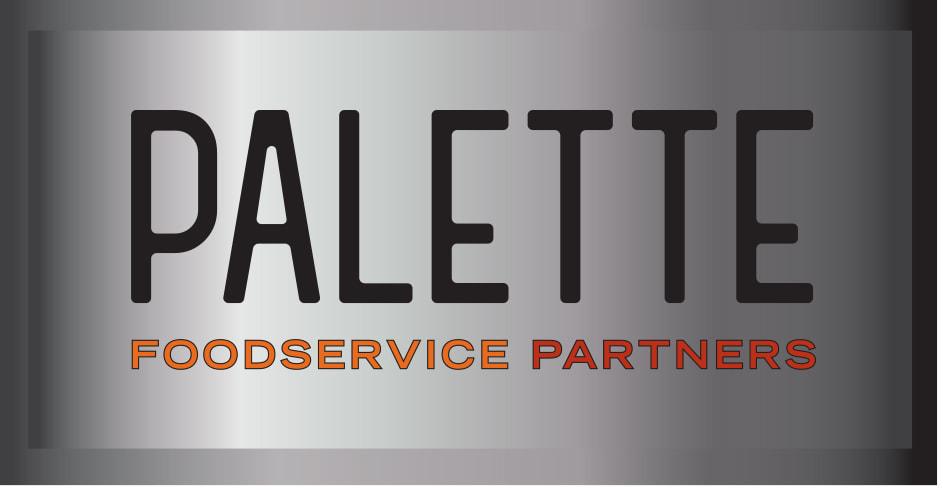 Whether you call it fast-fine or fine-casual, technology is making fine dining look different now. As Food & Wine reports, there are a number of high-end restaurants around the country where guests are asked to order via QR code or line up at a counter to place their order, then take their seats, at which point the experience begins to feel more like a traditional fine dining experience. Service in these restaurants feels a bit different than it once did: There might be a sommelier on hand who is cross-trained as a server, bartender, cashier and host. If guests go for the changes, they could well be signs of what’s to come in the fine-dining space. When Nation’s Restaurant News surveyed 600 operators for their second annual Restaurant Technology Outlook this year, they found several business areas where restaurant operators are looking to tech to improve their operations – and all have the potential to improve the sustainability of the fine dining segment. Nearly one-third of respondents said that they already get the best return on investment when they adopt tech in the front of the house – other parts of the business scored lower. Further, when asked about their desired potential return on investment for restaurant tech, most respondents mentioned increased productivity and efficiency, as well as time savings for staff and managers. These are all changes on plain display in this new breed of fine dining restaurants, which is likely cutting waste in a range of ways.  When you read your restaurant’s guest reviews, where do you see opportunities to improve your hospitality? If negative feedback tends to be more about the speed and ease of your service than about your menu, you may be able to make some marked improvements to their experience using tech. For some guests, it may not take much to tarnish an otherwise positive dining experience: Perhaps they have to wait for their check when they are eager to leave, are unable to easily split the bill when dining with a group, come in starving and don’t know when their order may arrive, have a less-than-smooth ordering process on your website or mobile app, or struggle to find a member of staff when they have a problem with their meal. Looking at your guest journey, both in your dining room and offsite, where are people apt to hit snags? Can your current tech stack help streamline those issues? At the same time, consider how you can tap these tools to gather feedback from guests at the precise point when it is most helpful to your business – like immediately after guests finish their meal, or, in the case of a problem with an order, an alert in the moment.  Whether your guests love them or hate them, QR codes have been sticking around at restaurants. They are an easy choice for restaurants looking to collect data and build loyalty, but guests who still like holding paper menus may need some extra encouragement to improve the experience of using the codes. Consider harnessing QR codes to connect guests to additional nutrition and allergen information for a menu item or retail food product. Add to the surprise factor of your gift cards by using a code on the cards that directs the recipient to a photo or video of their gift online. QR codes can also put your paper menu to shame by helping guests experience menu items before ordering them: Food Management reports that at the Pensacola Beach Hilton, they’re using QR codes to show their menu alongside video previews of select dishes and drinks.  Love them or hate them, QR code menus seem to be sticking around. That is good news for many restaurant operators, particularly when the code enables ordering and payment from the table – and in the process, frees up staff, gets orders to the kitchen faster and minimizes order inaccuracies. That said, the guest experience of using these menus can be a bit lacking. If you find more guests asking for paper menus, it may be time to revamp your setup. Give your QR code menu the same treatment you would give your mobile-enabled website – limit the need for scrolling, expanding and reducing the screen, and make it possible for guests to get the overall sense of your menu in the space of a few seconds.  As escalating food and energy costs continue to drive inflation higher, restaurant operators are trying to run even more leanly than they have in the past two years. But as a recent Nation’s Restaurant News report mentions, you can use tech to minimize the impact of inflation on your operation. Emphasize the importance of ordering directly from you through your website or app versus third-party vendors – being able to accumulate and analyze guests’ data is critical to developing the menu items and promotions that will bring them back. Then try to put costly or tedious functions on autopilot. That means considering QR codes or self-order kiosks at the front of house to streamline ordering and payment while minimizing the labor required. In the back of house, consider tech tools that can make your food safety program more consistent – connected temperature sensors, digital checklists in place of paper processes, and the use of alerts to monitor cleaning and maintenance can all help you minimize waste and manage resources better at a time when they are especially tight.  QR codes have become ubiquitous in restaurants, helping businesses process orders and payments quickly with less labor. But as with all technology, there is risk for malicious activity that could impact your guests. Cybercriminals have begun to alter QR codes in an effort to redirect consumers to fraudulent websites and access their personal details. This can happen via stickers that are placed on top of legitimate QR codes on a restaurant menu or signage, or via fraudulent QR codes emailed to consumers. Consumers can avoid being scammed by ensuring they don’t scan codes that appear to have been tampered with, never scanning an emailed QR code, checking the URL of the page that the QR code takes them to, or visiting the restaurant’s website directly to place an order. It’s a risk to be aware of if you’re directing your guests to QR codes more often right now (and reducing staff accordingly).  If there is one area of tech to focus on this year, you’ll be in a good spot by smoothing out the process your guests must go through when placing orders and making payment – and finding low-touch, low-interaction ways of doing so. According to a new report from Oracle about consumer expectations for restaurant dining, 73 percent of restaurant patrons would like to reduce their use of cash, 49 percent would like to minimize their human interaction, 46 percent want to settle their bill on a mobile app, and 71 percent wouldn’t mind if restaurants, at the time of online booking, communicated a limit to the amount of time guests could keep a reserved table. This is good news for operators struggling to keep labor. What aspects of your guest experience might be better managed by outsourcing them to tech this year?  At the recent Restaurant Leadership Conference, Technomic’s Joe Pawlak had some good news about key segments of the restaurant industry (and less-great news about another) – namely that business for quick-service and fast-casual restaurants had returned to pre-pandemic levels, but fine dining was still three years away from a full recovery. To be sure, the technology that has kept businesses going during the pandemic has been a closer fit for limited-service restaurants. However, many of the tech tools that have been used to elevate efficiency and hospitality these past two years still apply to full-service restaurants, albeit in different ways. In a recent episode of the webcast Restaurants Redefined from Modern Restaurant Management, three industry professionals weighed in on how they see technology evolving for restaurants after the pandemic – particularly for full-service restaurants. At the front of the house, for example, technology can help ease some of the friction points. What if a restaurant could use geofencing technology to identify when a guest arrives and get a jump on preparing their favorite appetizer or having their usual wine on the table as they sit down? While a full-service restaurant might not want to use a QR code for guest ordering, offering a code (or other app-based option) for paying the bill when the guest is ready to depart could improve the overall experience. Empowering a server to offer a refund or other check adjustment on the spot as needed via tech tools can also boost service. At the back of the house, technology that minimizes human interaction – ovens, grills and other appliances that don’t require much human oversight – will help free up staff to elevate guests’ experience at the front of house. Finding ways to adapt the technology available – not so much to minimize human contact but to improve the human contact that full-service is known for – might just help hasten the recovery of these businesses.  At a time when every extra bit of profit is critical, it’s important for your customers to be ordering food from your restaurant app and, ideally, collecting their order from you – as opposed to calling a third-party delivery provider to bring it to them. If you’re trying to convert guests from third-party channels right now, focus on offering a good introductory deal that will entice people to order via your restaurant directly, then making it as easy as possible for them to stay with you as opposed to reverting back to the third-party app. That could mean placing a flyer in every third-party order bag that leaves your restaurant and including a coupon for a substantial discount off of a future restaurant-app order, as well as a QR code that the recipient can scan to get your app. From that point, you will have an entry point you can use to send subsequent offers they can redeem when they use your app and/or collect an order curbside. And while those offers may not be as substantial as the initial one, they can still provide a discount from what the customer would have to pay a third-party provider. You can also continue to use the data you collect from your app to make your offers increasingly customized. When you test the experience of ordering through your app and compare it to the ease of ordering via a third-party provider, where are the snags? Ironing them out should mean the difference between retaining the customer ordering via your app and having them return to the third-party app on subsequent orders.  While restaurant technology had been steadily gaining ground before Covid, it appears to have changed many processes for good. During a recent online discussion presented by the National Restaurant Association, industry leaders weighed in on the most important tech-enabled shifts that have become permanent in the past two years. Among them are the online cashless ecosystem for restaurants – it’s now a customer expectation to be able to order via an app or a delivery service, no cash needed. Flexibility to order/collect via multiple channels has also become critical – and technology is key to helping your staff juggle all of those streams simultaneously. Finally, tech continues to fine-tune our capability to order and pay at the table. (So despite the pushback that QR codes get from some guests, the flexibility and speed they offer operator and guest alike may give them staying power.) |
Subscribe to our newsletterArchives
July 2024
Categories
All
|



 RSS Feed
RSS Feed